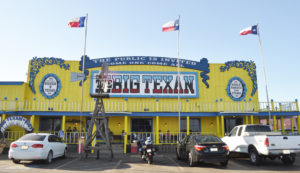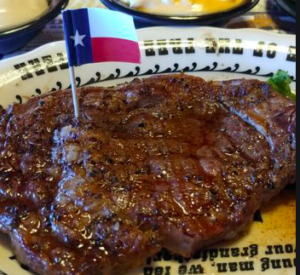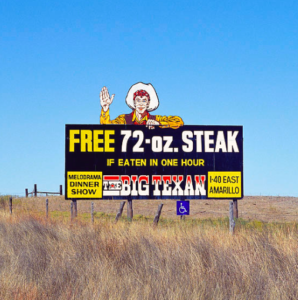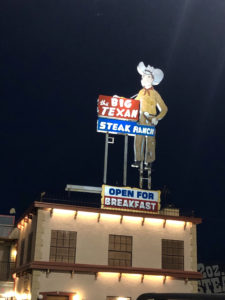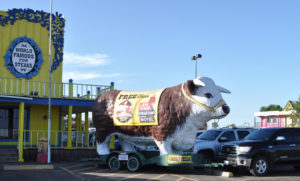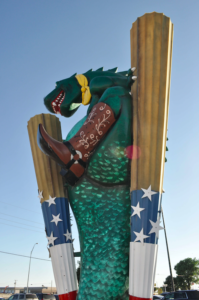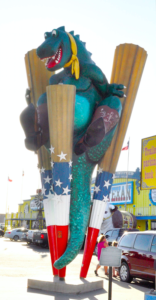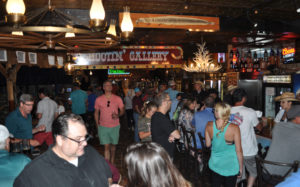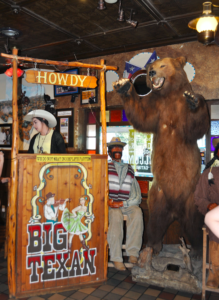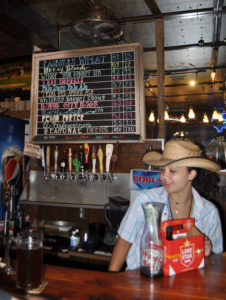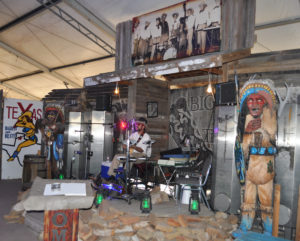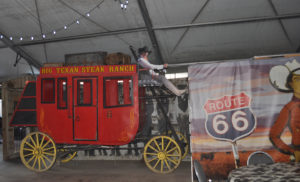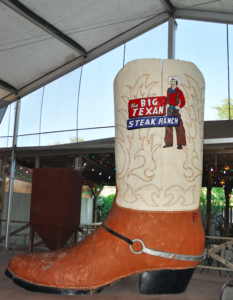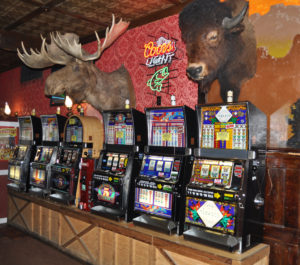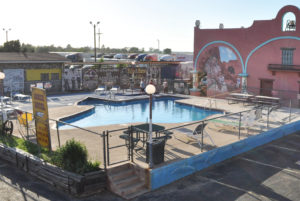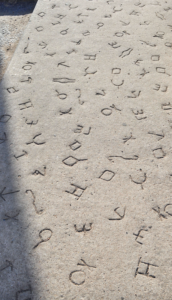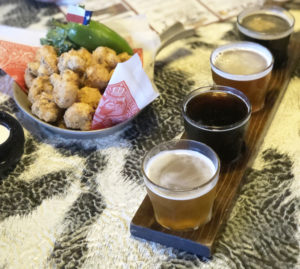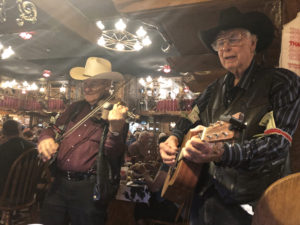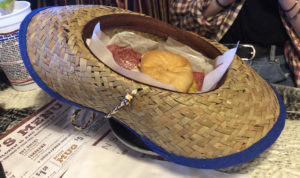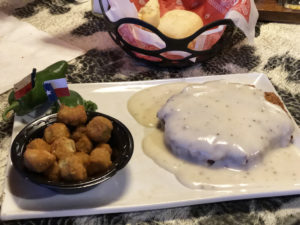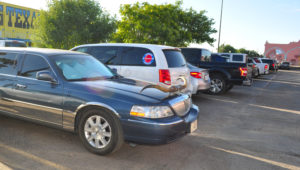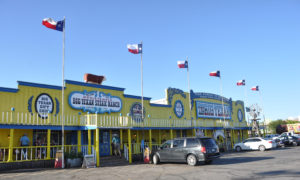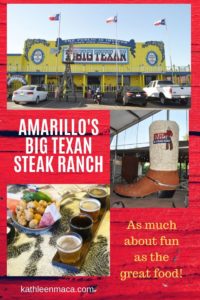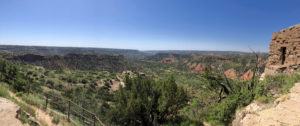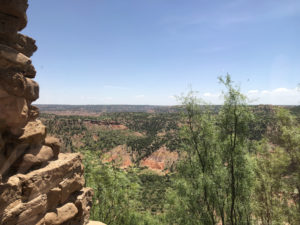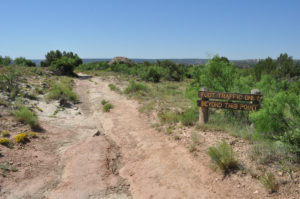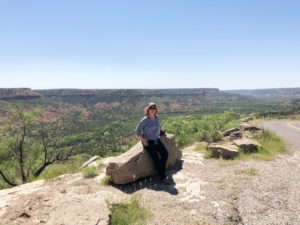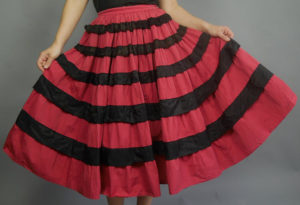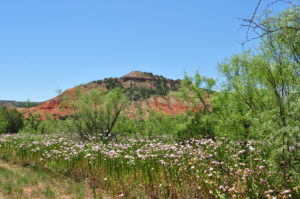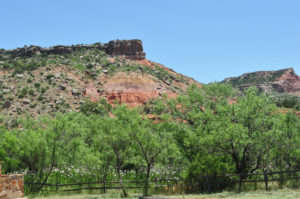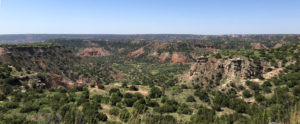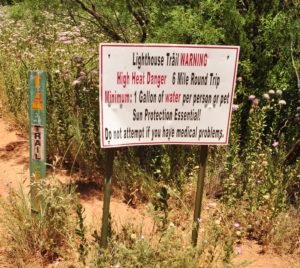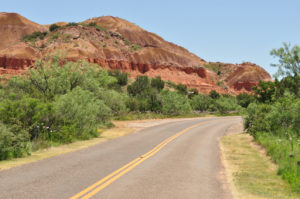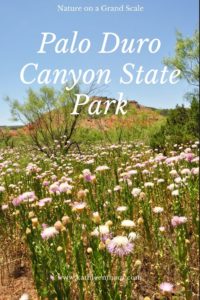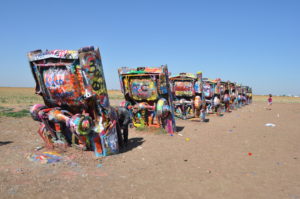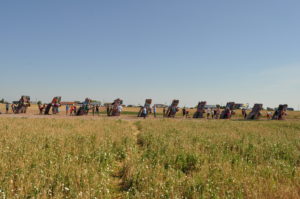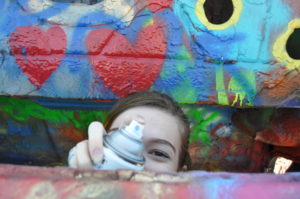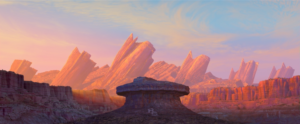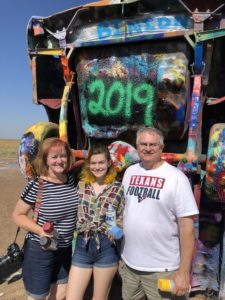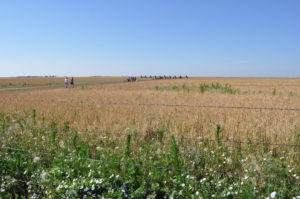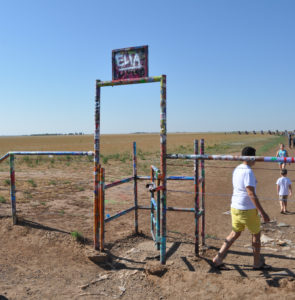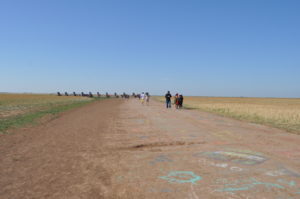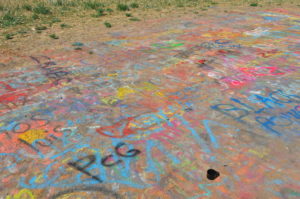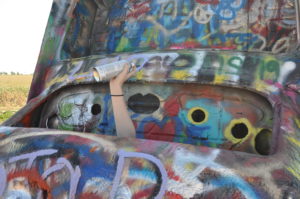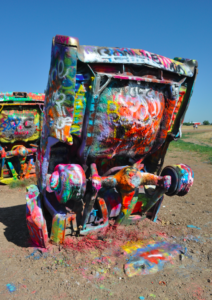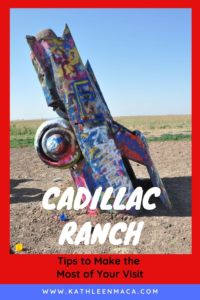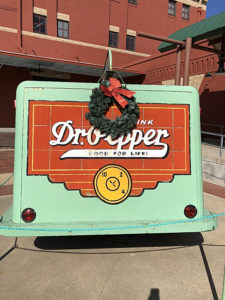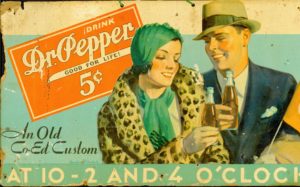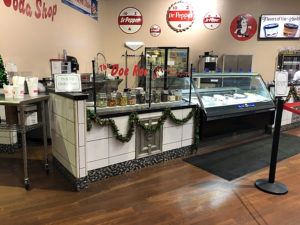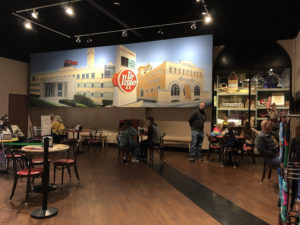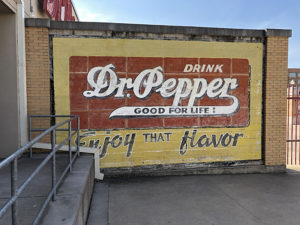Tag: family trips
Palo Duro Canyon: Adventure on a Grand Scale
I thought that when people referred to Palo Duro as the “Grand Canyon of Texas” they were probably overstating things . . . until I saw it for myself.
The second largest canyon in the United States, Palo Duro is 120 miles long, 20 miles wide and up to 820 feet deep. It’s the second largest park in the state park system – 28,000 acres (over 45 square miles) with 28 miles of hiking, biking and horse trails. That’s a lot of territory!
People have inhabited the canyon for about 12,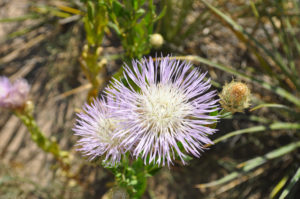 000 years, and its history includes exciting chapters like Comanches and the Goodnight Trail. But This time around our family just focused on the absolute beauty of nature.
000 years, and its history includes exciting chapters like Comanches and the Goodnight Trail. But This time around our family just focused on the absolute beauty of nature.
Texas bought the land for the park in 1933. Civilian Conservation Corps workers spent five years creating the park, a cabin for their home base, the winding road to the canyon floor, the CCC Trail, and the El Coronado Lodge (now the Visitor Center). The craftsmen used local stone and wood for building materials and furniture, and forged decorative metal ornaments.

After our morning ride along the rim of Palo Duro Canyon (more about that in my last post) we headed to the state park, ready to see more of the stunning scenery. Initially, we intended to swing in for a short visit since we knew the clothes we were wearing (long sleeved shirts, jeans and boots) were perfect for riding, but not for hiking. Once there though, the views lured us further and further into the canyon, anxious to see what was next.
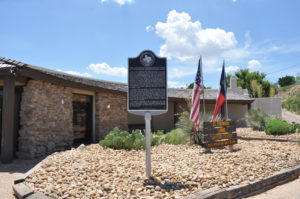 Just a couple of miles inside the entrance, we made our first stop at the visitor’s center (the original the El Coronado Lodge) that was built by the CCC, so it was fitting that exhibits included some fascinating relics of the Corps’ days in the canyon. There’s also a small gift shop, though I’ll mention a more “souvenir-y” option later in this post.
Just a couple of miles inside the entrance, we made our first stop at the visitor’s center (the original the El Coronado Lodge) that was built by the CCC, so it was fitting that exhibits included some fascinating relics of the Corps’ days in the canyon. There’s also a small gift shop, though I’ll mention a more “souvenir-y” option later in this post.
The vistas from the vantage point outside of the lodge were so enchanting, we knew we had to go at least a bit further into the park.
We took Park Road 5 which winds down to the canyon floor, circles clockwise in a 16 mile loop and slowly climbs back up to the rim.
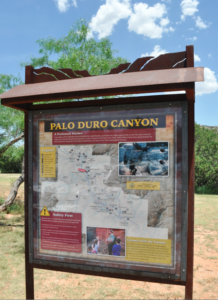
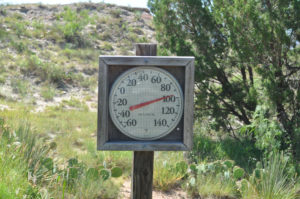 The first, short trail we ventured out on was relatively easy, but it was quickly apparent that at 11:00 a.m. it was already too hot (in addition to inappropriate clothing) for us to take on any of the longer trails. We were still fairly close to the rim, and the canyon floor would be about twenty degrees hotter!
The first, short trail we ventured out on was relatively easy, but it was quickly apparent that at 11:00 a.m. it was already too hot (in addition to inappropriate clothing) for us to take on any of the longer trails. We were still fairly close to the rim, and the canyon floor would be about twenty degrees hotter!
The view from even the least challenging trails are more than worth the effort and heat!
Each one we investigated offered increasingly impressive scenery.
Some of the trails were quite rocky and others were red dirt that I would have expected more in Oklahoma.
Four geologic layers are exposed on the canyon walls, that seem to change color depending on the time of day and season of year – just one of the reasons Palo Duro draws so many amateur and professional photographers.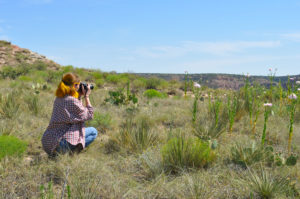
Once I heard the erosion features referred to as “Mexican skirts” it was hard to get that image out of my mind. It’s really appropriate, don’t you think?
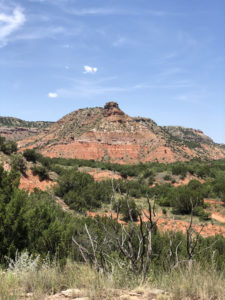
The park provides enough diversity in its habitats to be a comfortable home to quite a variety of wildlife, in addition to part of the state herd of longhorns. Coyotes, bobcats, white-tailed and mule deer, and many species of snakes and lizards. We saw several roadrunners darting across the terrain, which reminded me of living in El Paso when I was little – and the birds seemed to be everywhere.
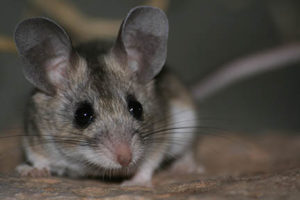
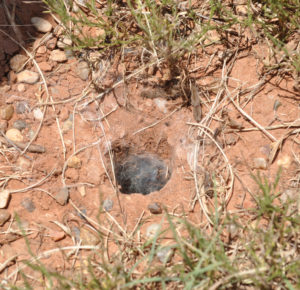
You might even spot some wild turkeys. Did you know that a group of turkeys is called a “rafter?” There’s your trivia for the day!
Two threatened species also live in the canyon: the Palo Duro mouse (which only lives in three Texas counties) and the Texas horned lizard (the State Reptile of Texas).
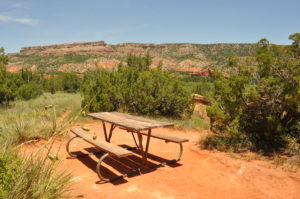 Along our driving route we passed several picnic and camping areas. When I return for my next visit (and make no mistake about it…there WILL be a next visit!) I’d love to stay in one of the cabins on site. Imagine waking up to these views.
Along our driving route we passed several picnic and camping areas. When I return for my next visit (and make no mistake about it…there WILL be a next visit!) I’d love to stay in one of the cabins on site. Imagine waking up to these views.
One of the most pleasant surprises we encountered was fields or wildflowers, as well as individual flooring plants that had stubbornly pushed their way up through the dry dirt. In central and south Texas many wildflowers were already past season in June.
Indian blanket, American basket-flower (shown in photo), sunflower, paperflower, blackfoot daisy, tansy aster, sideoats grama, buffalograss, sand sage, yucca and prickly pear cactus decorated the canyon floor and made the area appear to be more of a place for living creatures than desolate and empty.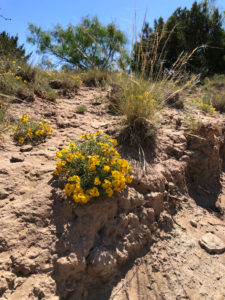

Even though we traveled the majority of the distance by car, we drank a LOT of water. Staying hydrated in the canyon (which can reach 130 degrees in summer) is non-negotiable!
But if you think this vast canyon, however arid, couldn’t possibly be romantic I’m here to tell you you’re wrong. Sharing this grandeur (not a word I use lightly) with the ones you love is a memorable experience.
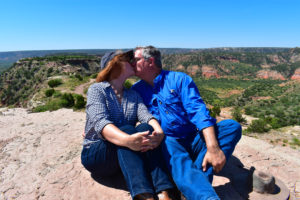
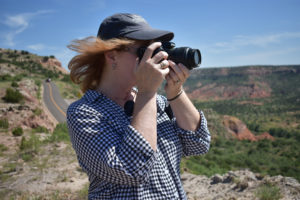

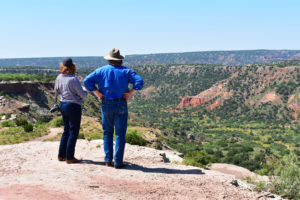
We pulled over one last time at the base of the canyon to check out the trailhead for the famous Lighthouse formation.
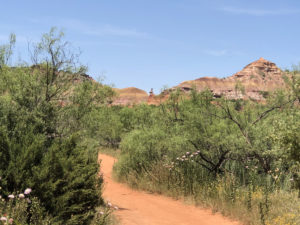
The Lighthouse Trail is the most well-known trail in Palo Duro Canyon. It’s considered a moderate hike ( 2.72 miles each way) but having arrived during the heat of the day without the proper shoes, we vowed to return at another time to venture off to see unusual 310 foot tall formation. I walked just around the initial bend of the trail to take a photo (though far away) of the lighthouse, which looked small in the distance.
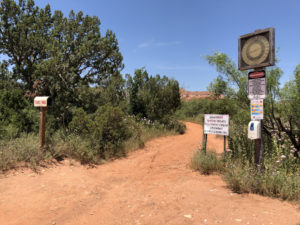 The park has posted multiple warnings about the danger of heat and dehydration at the head of the trail, and even staffed a tent with a ranger to provide information and advice to people before they set out. Although I certainly didn’t envy her, it was impressive how seriously they took visitors’ safety.
The park has posted multiple warnings about the danger of heat and dehydration at the head of the trail, and even staffed a tent with a ranger to provide information and advice to people before they set out. Although I certainly didn’t envy her, it was impressive how seriously they took visitors’ safety.
By that time we had worked up an appetite and exhausted our water supply, so we headed to the Palo Duro Trading Post on the rim for a late lunch. They don’t serve anything fancy, but you know those times you’re so hungry everything taste like the BEST (fill in the food blank) ever? Yep, it was one of those days. The staff was friendly, service fast and tables clean. Hamburgers, grilled cheese sandwiches and hot dogs seemed like the find of the day. And the ice cream? C’mon…what do YOU think?
The Trading Post also offered a fun variety of souvenirs from T-shirts to mugs to jewelry, all very reasonably priced.
Happy with our visit and satisfied appetites, we left the park to go back to the hotel to take off those boots and give our feet a rest before heading out to see more of Amarillo.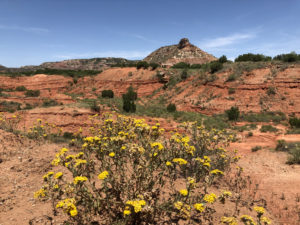
If you only have time to visit one place in the Texas Panhandle (and that would be a shame), Palo Duro Canyon State Park should be that place.
When you go, remember to:
-
Bring and drink water
-
Wear sunscreen, a hat and protective clothing
-
Have your camera ready
-
Bring and drink water
-
Pick up a map before you head out
-
Wear comfortable, supportive shoes
-
And…you guessed it…bring and drink plenty of water!
Do you prefer to hike, bike or drive through sites like this beautiful state park? I’m interested to know!
Hit the Brakes – It’s Cadillac Ranch!
 Chances are if you’ve seen any photos of Route 66, a shot of the infamous Cadillac Ranch in Amarillo was among them. The row of ten, graffiti-covered Cadillacs buried nose-first in the ground has become famous around the world.
Chances are if you’ve seen any photos of Route 66, a shot of the infamous Cadillac Ranch in Amarillo was among them. The row of ten, graffiti-covered Cadillacs buried nose-first in the ground has become famous around the world.
Their make and models are no longer discernible due to weathering and layers of paint, but everyone seems to know they’re Cadillacs.
The public art installation gained immediate attention from its inception in 1974 by eccentric businessman-turned-artist Stanley Marsh 3 (he thought the III after his name was too pretentious).
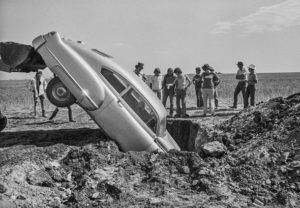 Marsh commissioned the Ant Farm, a radical art group consisting of Chip Lord, Hudson Marquez and Dough Michaels, to carry out his plan.
Marsh commissioned the Ant Farm, a radical art group consisting of Chip Lord, Hudson Marquez and Dough Michaels, to carry out his plan.
 The classic Caddies dating from 1948 to 1963 were purchased for about $200 apiece and were installed with their original paint jobs. Depending on their drivability they were either hoisted or driven into the holes that became their almost-final resting places in a wheat field just outside the city limits.
The classic Caddies dating from 1948 to 1963 were purchased for about $200 apiece and were installed with their original paint jobs. Depending on their drivability they were either hoisted or driven into the holes that became their almost-final resting places in a wheat field just outside the city limits.
The temptation to visitors to leave their mark on the unusual sight became a rite of Route 66 passage, and didn’t seem to bother Marsh who embraced the enthusiasm of the new tradition.
In 1997 urban sprawl necessitated moving the interactive folk art attraction a couple of miles down the road to its current site in a former cow pasture on I-40. The cars were carefully moved and reset in their original order and angle. It’s said that even some of the surrounding debris was moved to the new location with them, but that seems more like a bit of a Texas Tall Tale in the making.
The cars were repainted in their original colors in 2002, and in 2003 they were painted in flat black to mourn the passing of the founder of the Ant Farm.
Other than those two efforts, the colors and patterns have constantly evolved thanks to the enthusiastic efforts of visitors. It will never look exactly the same, even if you visit two days in a row.
The Cadillac Ranch was one of our most anticipated stops along our trek across the Texas section of Route 66, and it didn’t disappoint. It almost shouts, “Just enjoy and don’t take yourself so seriously.”
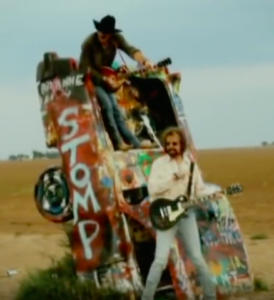
You may even recognize the Ranch from Brooks & Dunn’s “Honky Tonk” music video or Pixar’s animated ‘Cars’ movie – where its silhouette was used as the design for a mountain range.
But let me steer you in the right direction for your own Caddie Outing . . .
First of all, it’s free…so there’s no excuse to pass up the opportunity to visit. Plan to bring at least one can of spray paint per person to join in the fun.
Heading east on I-40, take Exit 60 (Arnot Road). Pass through the intersection with Love’s Truck Stop and keep an eye out for cars parked on the side of the road to your right. Yes, the Cadillac Ranch is open 24/7/365 so there are always cars.
Don’t expect a big touristy, lighted sign shouting the location, though. What you’ll see first is a turnstile gate and parked cars before you spot the Caddies propped up in a pasture in the distance.
Typical for a summer day in the Panhandle, it was hot and windy so hats, sunscreen and water are essentials.
The day we visited there was a fellow selling key chains and other quirky mementoes made from paint that had chipped off the cars, by the gate out of the back of his truck. Enterprising, but we passed. You’ll see large pieces of this layered paint on the ground surrounding the cars, so you can pick up one to make your own creation if you like.
Once you pass through the turnstile a wide dirt path leads out to the Cadillacs.
Note: the turnstile gate was the only access I saw while I was there, so unless a visitor in a wheelchair has assistance to get through the tight gate and has their folded chair passed as well, I’m not entirely sure this would be accessible. I would advise calling the visitors’ bureau who might know of another way in.
I’ve also heard that the site can turn into quite a mud pit after a rain, but our timing didn’t make that an issue.
We purposely wore clothes that we didn’t mind getting speckled with a bit of paint, since the wind chose exactly where the spray went.
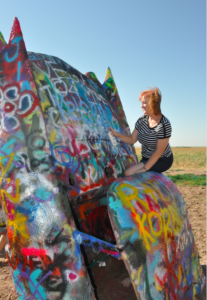
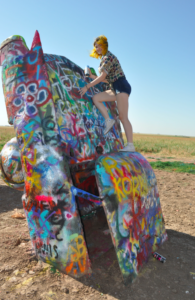 Don’t hesitate to jump right in and leave your mark on any or all of the cars. It’ll last at least until the next “artist” comes along. Be aware if you’re climbing on or inside them that though they’re remarkable sturdy…they are deteriorating and shouldn’t be 100% trusted to support you!
Don’t hesitate to jump right in and leave your mark on any or all of the cars. It’ll last at least until the next “artist” comes along. Be aware if you’re climbing on or inside them that though they’re remarkable sturdy…they are deteriorating and shouldn’t be 100% trusted to support you!
Some people even spray-painted messages and patterns in the dirt surrounding the cars, which was so hard it made a pretty good canvas.
Visitors are asked to carry out their empty spray cans to toss in the trash bins along the fence line, but of course not everyone does. Be a bit of a hero and pick an extra one up to throw out with yours!
The only traffic jam these cars see any more are the crowds that surround them. We chatted with people from several states and different countries and of all ages, and everyone was having a ball.
Off-beat? Yes. Fun? Absolutely! The Cadillac Ranch makes my list of must-stops along the road.
Calling Dr Pepper
It’s my biggest weakness…Diet Dr. Pepper. Guess that’s part of what makes me a true Texan. The same goes for my sister.
One of the sites that sends heart emojis through my brain when I’m on the road is spotting a Sonic Drive-in, where I can order a Route 44 (yep, 44 ounces!) Diet Dr. Pepper with vanilla. Oh…my…goodness. Especially since I don’t drink coffee, these caffeine boosters really come in handy!
So when my sister and I were in Waco recently, of course we HAD to visit the Dr. Pepper Museum.
We were pleasantly surprised by how interesting and large it is.
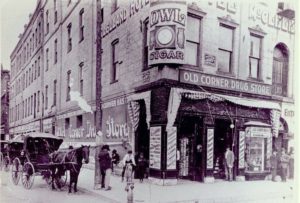
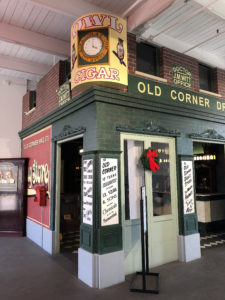
The drink itself originated at Morrison’s Old Corner Drugstore, which is represented with a charming reproduced facade at the museum. Go inside and you can hear an automaton of Charles Alderton talk about how he invented the beverage through a series of experiments with fruit syrup mixtures in 1885.
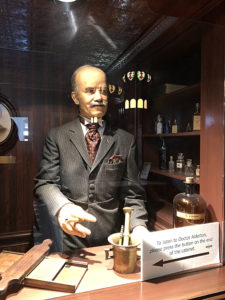
He dubbed his creation “Dr. Pepper” (the period was dropped in the 50s). In 1891 the bottling operation was founded that later became the Dr Pepper Company.
Once the drink was introduced to a larger audience at the 1904 World’s Fair, it’s popularity spread like wildfire.
During the 1920s and 30s researchers discovered that sugar provided energy and that the average person experiences energy “letdowns” during the day at 10:3 0 a.m., 2:30 p.m. and 4:30 p.m. It was suggested that drinking a Dr. Pepper (no sugar shortage there!) at 10, 2 and 4 would avoid that. This was incorporated into an advertising campaigns for about 20 years, and helps to date any old advertising (including outdoor murals) that includes “10, 2 and 4.”
0 a.m., 2:30 p.m. and 4:30 p.m. It was suggested that drinking a Dr. Pepper (no sugar shortage there!) at 10, 2 and 4 would avoid that. This was incorporated into an advertising campaigns for about 20 years, and helps to date any old advertising (including outdoor murals) that includes “10, 2 and 4.”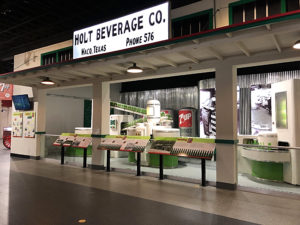
There’s so much more history to see at the museum including a working bottling line and a dizzying peek into the 27 1/2 foot deep, ori ginal artesian well that provided water for the product.
ginal artesian well that provided water for the product.
There are also period delivery trucks, promotional toys and even a miniature town diora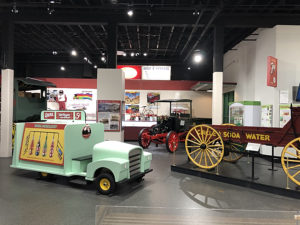 ma that will steal your heart.
ma that will steal your heart.
This is one of those rare tourist attractions that would be great to see with multiple generations of your family, as they can all find things that will jog memories and bring a smile.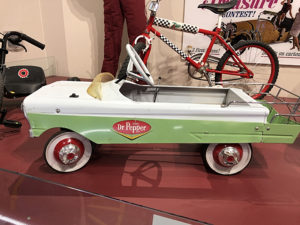
And at the end of your visit you can treat yourself to something from the on site ice cream parlor and soda fountain!
Operating soda fountain and ice cream parlor

